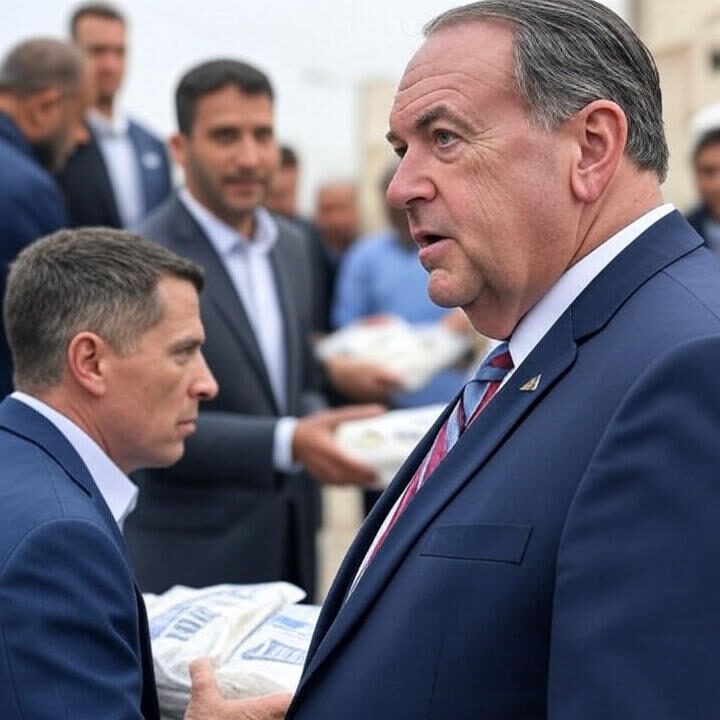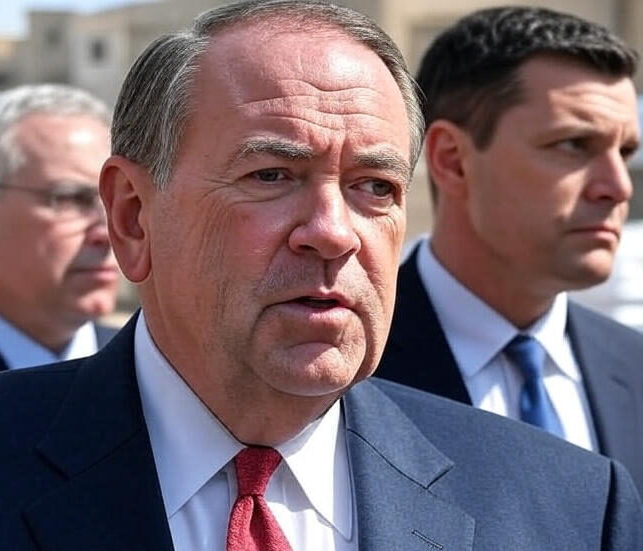On August 1, 2025, U.S. Middle East envoy Steve Witkoff and Ambassador to Israel Mike Huckabee traveled to Gaza, touring a food distribution site run by the Gaza Humanitarian Foundation (GHF) a controversial, U.S. and Israeli backed operation amid mounting global outrage over humanitarian conditions (Politico).
Their mission was to provide President Trump with first hand insight into the crisis, help craft a new aid plan, and evaluate GHF’s approach despite growing condemnation from the United Nations and human rights organizations (Politico).
Who Is the GHF?
Founded in February 2025 and registered in both Delaware and Geneva, the Gaza Humanitarian Foundation was created with political support from the U.S. and Israeli governments as an alternative to UN led aid delivery in Gaza (Wikipedia). It operates a small number of secure hubs in southern Gaza, secured by private U.S. contractors and monitored by Israeli military patrols (Wikipedia).
Distribution is highly centralized: Palestinians must undergo identity screenings (possibly biometric), pass through chain link fences under tight Israeli control, and collect pre packaged food, hygiene kits, and medical supplies. The model sharply contrasts with the UN’s decentralized, neutral system (Wikipedia).
Despite GHF claims of delivering over 70 to 100 million meals since May, its funding and operations remain opaque, with questions around serious audit exemptions and bypassing of standard safeguards (Reuters).
Rising Death Toll and Humanitarian Outcry
Since the GHF began operations in late May, more than 1,000 Palestinians have been killed near its distribution sites most reportedly by Israeli forces firing warning shots or outright gunfire as crowds surged toward aid points (Reuters).
- On May 27, 28 in Rafah, chaos erupted. Reports indicate 10 dead and 62 wounded after Israeli tanks opened fire as crowds attempted to access aid (Wikipedia).
- From June 1 to 3, upwards of 75 civilians were killed and hundreds injured in escalating violence at GHF locations (Reuters).
Human Rights Watch labeled the GHF distribution sites “death traps,” and the UN has repeatedly refused to cooperate with GHF citing violations of neutrality and impartiality principles (TIME, Reuters, Reuters, Reuters).
Purpose of the Visit
Witkoff and Huckabee spent over five hours in Gaza, touring a GHF site in Rafah, gathering briefings, meeting people on the ground, and evaluating operations firsthand (CBS News). They aimed to report back to Trump and help craft a more effective humanitarian strategy for delivering food and medical aid to Gaza’s 2.1, 2.3 million residents facing acute hunger and famine risk (Politico).
Huckabee wrote on social media that GHF “delivers more than one million meals a day,” while emphasizing the mission to “learn the truth” about conditions on the ground (CBS News).

Criticism and Constraints
- The UN and aid agencies argue the GHF model violates humanitarian standards, centralizes vulnerability zones, excludes northern Gaza, and disregards impartiality rules (Reuters, Reuters, Reuters).
- Reports confirm hundreds killed near GHF hubs, raising alarm over crowd control tactics and Israeli involvement in policing distribution points(Globedge).
- USAID oversight and internal U.S. State Department assessments became contentious: top officials waived mandatory audits and anti fraud checks to fast track a $30 million grant, bypassing standard security and vetting procedures (Reuters).
- Swiss authorities shut down the GHF’s Geneva office for legal noncompliance, and consultants such as Boston Consulting Group publicly withdrew from their roles citing ethical concerns (Wikipedia).
Summary at a Glance
| Aspect | Details |
|---|---|
| Visitors | Steve Witkoff (Mideast envoy), Mike Huckabee (U.S. Ambassador to Israel) |
| Foundation | Gaza Humanitarian Foundation a U.S. and Israeli backed aid operation |
| Operational model | Centralized hubs, identity screening, private security, limited geographic reach |
| Casualties | Over 1,000 deaths near GHF sites since May |
| Criticism | UN rejects neutrality claims; NGOs warn of militarized aid |
| Funding concerns | $30 million U.S. grant, audit waivers, opaque donor structure |
| Purpose of site visit | Assess GHF operations, report to Trump, help devise new aid plan |
Conclusion
The visit of U.S. officials Steve Witkoff and Mike Huckabee to Gaza underscores the Trump administration’s reliance on the Gaza Humanitarian Foundation as its primary mechanism to deliver aid. However, the initiative remains deeply contested. While it has facilitated meal distribution amid growing famine concerns, it has also drawn international condemnation for its centralized, militarized approach and failure to abide by established humanitarian norms.
The site visit reflected a high stakes attempt to balance political backing, strategic messaging, and crisis intervention but risks further alienating the UN and global aid community. As Gaza continues to suffer food shortages under severe access constraints, the viability and safety of the GHF distribution system and any future U.S. led strategy remains under intense scrutiny.

